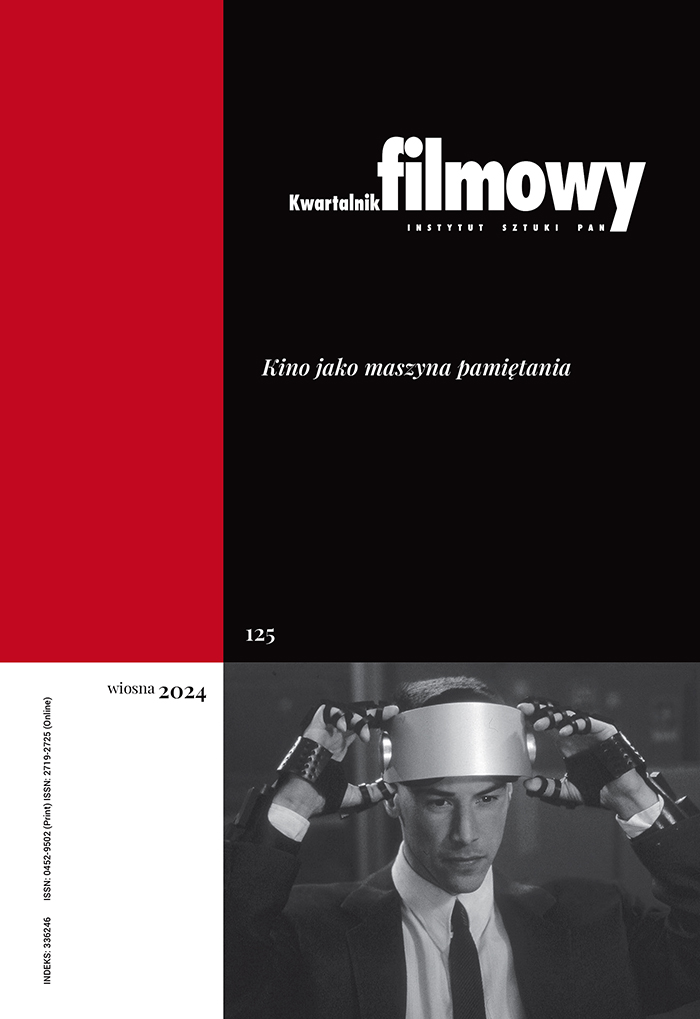“Ran”, or Shakespeare in Japanese
Abstract
Pointing to the plot similarities between Kurosawa’s film and Shakespeare’s tragedy, the author notes the original approach of the outstanding director to the play written for the theatre. What he has in mind is not the simple mingling of the Elizabethan theatre with the Japanese aesthetic tradition, but the way the source material was processed without the use of simple transpositions and illustrativeness. At the stylistic and narrative levels, references to the classical nö theatre, Kaidan – Stories and Studies of Strange Things, and folk myths and legends, especially the use of animal metaphors, characterising the protagonists both in Shakespeare’s drama, and in Kurosawa’s film play an important role in Ran. The last interpretative trope which Loska notes is the presence of religious references, particularly visible in references to the Buddhist tradition, which lightens the pessimistic message of the work.
Keywords:
Akira Kurosawa, William Shakespeare, nō, kaidan, Japanese cinemaReferences
Benedict, Ruth. 1999. Chryzantema i miecz: wzory kultury japońskiej. Tłum. E. Klekot, Warszawa: Państwowy Instytut Wydawniczy.
Google Scholar
Grilli, Peter. 1985. Kurosawa Directs a Cinematic Lear, „New York Times”, 15 December.
Google Scholar
Kane, Julie. 1997. From the Baroque to the Wabi: Translating Animal Imagery from Shakespeare’s King Lear to Kurosawa’s Ran, „Literature/Film Quarterly” 25 (2).
Google Scholar
Kott, Jan. 1992. Ran albo Lear ostateczny. W: tegoż, Płeć Rozalindy, Kraków: Wydawnictwo Literackie.
Google Scholar
Kozyra, Agnieszka. 2011. Mitologia japońska, Warszawa-Bielsko Biała: Wydawnictwo Szkolne PWN.
Google Scholar
McDonald, Keiko. 1993. Japanese Classical Theater in Films, Rutherford: Fairleigh Dickinson University Press.
Google Scholar
Melanowicz, Mikołaj. 2011. Akira Kurosawa – Ran: między ładem a chaosem. W: Akira Kurosawa – twórca japoński, twórca światowy, W. Laskowska-Smoczyńska, P. Kletowski (red.). Kraków: Biblioteka Muzeum Manggha.
Google Scholar
Melchior, Bonnie. 2005. King Lear and Ran: Identity Translated and Transformed, „East-West Connections: Review of Asian Studies” 5 (1).
Google Scholar
Nordin, Kenneth D. 2005. Buddhist Symbolism in Akira Kurosawa's Ran: A Counterpoint to Human Chaos, “Asian Cinema” 16 (2).
DOI: https://doi.org/10.1386/ac.16.2.242_1
Google Scholar
Serper, Zvika. 2001. Lady Kaede in Kurosawa’s Ran: Verbal and Visual Characterization through Animal Traditions, „Japan Forum” 13 (2).
DOI: https://doi.org/10.1080/09555800120081367
Google Scholar
Shakespeare, William. 2013. Król Lear. W: tegoż, Tragedie i Kroniki. Tłum. S. Barańczak. Kraków: Wydawnictwo Znak.
Google Scholar
Thompson, Ann. 1989. Kurosawa’s Ran: Reception and Interpretation, „East-West Connections: Review of Asian Studies” 3 (2).
Google Scholar
Yoshimoto, Mitsuhiro. 2005. Kurosawa: Film Studies and Japanese Cinema, Durham: Duke University Press.
Google Scholar
Żeromska, Estera. 2010. Japoński teatr klasyczny. Korzenie i metamorfozy, Warszawa: Wydawnictwo Trio.
Google Scholar
Authors
Krzysztof Loskakwartalnik.filmowy@ispan.pl
Jagiellonian University Poland
Profesor Uniwersytetu Jagiellońskiego, dyrektor Instytutu Sztuk Audiowizualnych tamże; zajmuje się filmem japońskim i kulturą współczesną; autor ponad stu publikacji naukowych, w tym jedenastu książek, m.in.: Dziedzictwo McLuhana. Między nowoczesnością a ponowoczesnością (2001), Hitchcock – autor wśród gatunków (2002), David Cronenberg: rozpad ciała, rozpad gatunku (2003, wspólnie z Andrzejem Pitrusem), Encyklopedia filmu science fiction (2004), Tożsamość i media. O filmach Atoma Egoyana (2006), Poetyka filmu japońskiego (2009), Kenji Mizoguchi i wyobraźnia melodramatyczna (2012), Nowy film japoński (2013).
Statistics
Abstract views: 542PDF downloads: 176
License
Copyright (c) 2014 Krzysztof Loska

This work is licensed under a Creative Commons Attribution 4.0 International License.
The author grants the publisher a royalty-free non-exclusive licence (CC BY 4.0) to use the article in Kwartalnik Filmowy, retains full copyright, and agrees to identify the work as first having been published in Kwartalnik Filmowy should it be published or used again (download licence agreement). The journal is published under the CC BY 4.0 licence. By submitting an article, the author agrees to make it available under this licence.
In issues from 105-106 (2019) to 119 (2022) all articles were published under the CC BY-NC-ND 4.0 licence. During this period the authors granted a royalty-free non-exclusive licence (CC BY-ND 4.0) to use their article in „Kwartalnik Filmowy”, retained full copyright, and agreed to identify the work as first having been published in our journal should it be published or used again.
Most read articles by the same author(s)
- Krzysztof Loska, „Tropical Malady”, or on Humans, Animals and Spirits in Apichatpong Weerasethakul’s film , Kwartalnik Filmowy: No. 110 (2020): Beyond Human Being
- Krzysztof Loska, Histories of Polish Migrants in European Cinema , Kwartalnik Filmowy: No. 109 (2020): Architectural Space in Film
- Krzysztof Loska, Journey to the New World. Cinematic Ethnographic Fiction in Post-Colonial Perspective , Kwartalnik Filmowy: No. 107 (2019): Journey, (E)migration, Pilgrimage
- Krzysztof Loska, Architecture and Japanese Colonialism – Cinematic Image of Cityscape in Occupied Seoul , Kwartalnik Filmowy: No. 109 (2020): Architectural Space in Film
- Krzysztof Loska, Apichatpong Weerasethakul – About Politics and Spectres , Kwartalnik Filmowy: No. 105-106 (2019): Cinema and Political Transformation
- Krzysztof Loska, From the Point of View of Indigenous Peoples: Film as a Tool of Decolonization in Canada , Kwartalnik Filmowy: No. 116 (2021): Cinema and Social Identity
- Krzysztof Loska, Memory, Performance and Affects – Genocide in the Films by Joshua Oppenheimer , Kwartalnik Filmowy: No. 111 (2020): Senses and Affects
- Krzysztof Loska, Oscar Micheaux and the Beginnings of African-American Cinema , Kwartalnik Filmowy: No. 117 (2022): Unknown/Hidden Cinema
- Krzysztof Loska, Teinosuke Kinugasa, Neosensualism and the Avant-Garde , Kwartalnik Filmowy: No. 82 (2013): Experiment: Film and Audiovisual Arts
- Krzysztof Loska, Contemporary Horror in the Guise of Found Footage , Kwartalnik Filmowy: No. 104 (2018): Essay, Found Footage, Compilation Film











